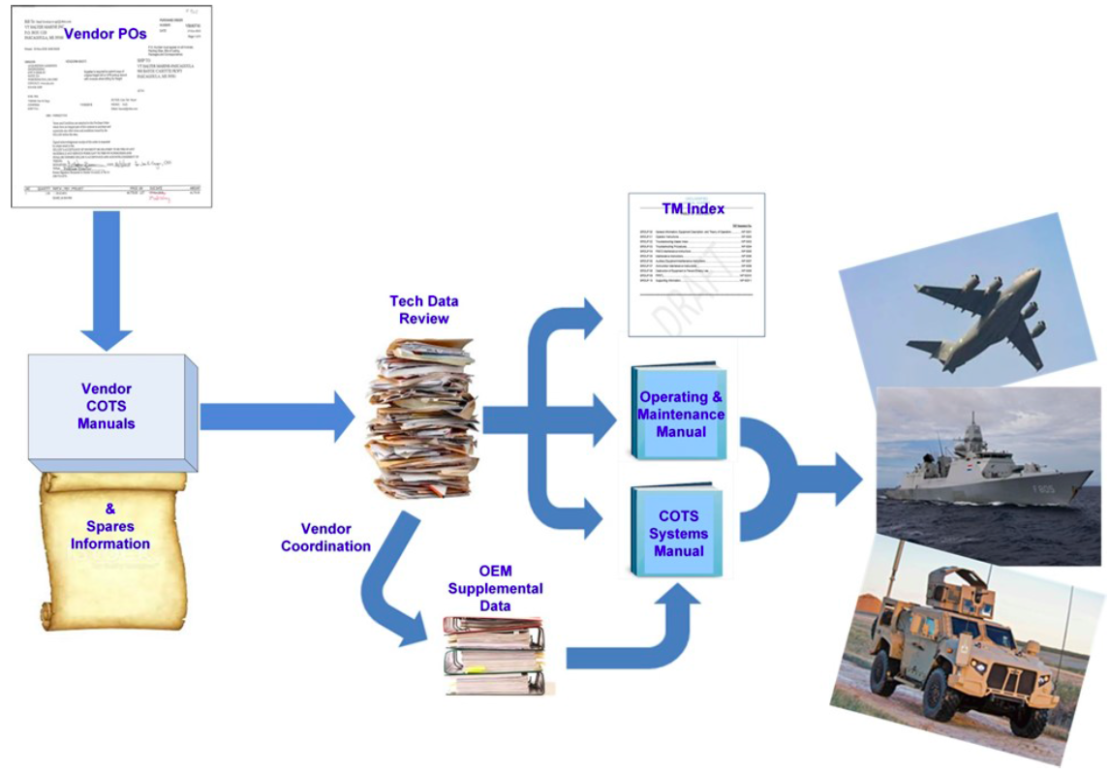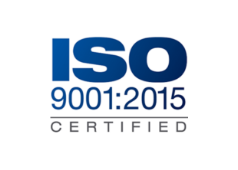Back to Blog
How to Leverage COTS Manuals in DoD Programs

Many of today’s Department of Defense (DoD) acquisition programs are focused on two important factors: getting the technology in the warfighter’s hands quickly and minimizing cost. But sometimes stakeholders get so enamored with the new technology, that life cycle considerations get overlooked. And, as we Logistics Engineers know, the “real” cost involved in an acquisition program is the cost of ownership for 20, 30, or more years. All one must do to see this reality in case form is look at the B-52 weapons system and the current efforts to re-engine this 50+ year old aircraft.
The cost aspect of bringing a functional capability to the field is often driven by available funding in today’s budget. This can also drive the scope and level of detail with which many of the Supportability requirements are included in the overall program. While the Product Support program can no longer be ignored or eliminated from acquisition programs because they are mandated by DoD acquisition policy, there are creative ways to limit the Product Support program investment through requirements tailoring.
One method of limiting the cost of support system development, such as technical manuals and supply support, is to maximize the use of Commercial off-the-Shelf (COTS) equipment for which there is existing design, maintenance, and support documentation. This approach encompasses a wide variety of non-developmental functional solutions that includes COTS, Government off-the-Shelf (GOTS), and standard hardware that someone else or another program has already funded with the associated support system development. It also allows us to take advantage of established Integrated Product Support (IPS) elements such as technical manuals.
So, how does a Logistics Engineer with a limited budget for technical manuals meet the acquisition program requirements for military standard technical documentation addressing the operating and support of a newly acquired system? We must be involved early in the development program and leverage whatever is available in the marketplace that will meet our needs or contribute to meeting the requirement. Being involved early ensures that existing technical data and operating/support instructions will be included in the purchase orders from suppliers of equipment, hopefully at a fraction of the cost of developing the data from scratch.
An astute Logistics Engineer will also utilize the multiple resources available from experience on similar developmental programs, public data centers, as well as the data-rich environment afforded by internet access. Does anyone remember the supply sergeant from M*A*S*H? Radar O’Reilly was an expert at finding or acquiring the key elements of support needed to run an efficient medical facility using both traditional (Army supply) and non-traditional (bartering with locals) means.
What we need is a plan to identify, gather, assess, and utilize the available technical data that will support the Logistics Engineer efforts to integrate these COTS systems and equipment into the overall support system planning activities. Figure 1 presents a logical, repeatable methodology for evaluating the status of, coordinating missing or inadequate, and incorporating available technical source data into technical manuals sufficient for the DoD/Department of Homeland Security (DHS) customer to safely operate and maintain the weapons system.

What kind of data is needed to support a comprehensive supportability analysis for these COTS systems and equipment? If we believe that these commercially available, catalog items are already operating in the field, then our development program should look to capitalize on current user experience. This encompasses technical data representing a comprehensive collection of the available information on the installed equipment that matches the delivered equipment configuration and includes all information necessary to operate the equipment and perform on-equipment maintenance, such as installation, start-up and shutdown.
By leveraging existing operating manuals, illustrated parts breakdowns, and maintenance procedures, we can develop an understanding of the supportability issues associated with a commercial item by adding insights related to the DoD operating environment and support capabilities. This understanding is developed using technical data from the people who know the equipment the best – the Original Equipment Manufacturer (OEM). Thereby, supporting maintenance planning efforts and focusing development program resources on the appropriate IPS elements.
After identifying available technical data, the next big task for the Logistics Engineer is to ensure that the data is sufficiently comprehensive and accurate to support Product Support Analysis (PSA) and maintenance planning activities that allow for a meaningful assessment of this “new” system’s readiness and life cycle cost impacts.
The level of detail in existing COTS operating and support documentation can be insufficient from a DoD perspective, particularly when considering the robust capability of the typical military operator and the desire to maximize the DoD’s organic repair capability. We need to recognize that the manufacturer or vendor usually provides data to commercial entities, who have minimal interest in life cycle support.
Evaluating existing COTS Technical Manuals to ensure they meet the requirements starts with the specific program requirements, typically contained in the Technical Manual Contract Requirements (TMCR) and Data Item Description (DID) from the program Statement of Work (SOW) and Contract Data Requirements List (CDRL). In development and review of technical manuals and documentation, MIL-PRF-32216A has proven to be a useful tool to verify compliance of COTS manuals contents in an arrangement that provides the appropriate level of detail and continuity from each supplier/vendor/manufacturer. Appendix A of the guidance document provides the analyst with a set of criteria (checklist) which the TMs must meet in order to fulfill their role on the program. These data requirements include, but are not limited to, information necessary to operate the equipment and to perform maintenance of the item. The TM will need to contain, at a minimum, detailed information needed to install, start-up, operate, troubleshoot, maintain, and safely shut down each piece of equipment provided by the supplier. More often, the Government includes a requirement for information necessary to overhaul and perform depot level repairs of the equipment in the supplied COTS data.
If a delivered COTS manual is deficient in content, the Prime Contractor will coordinate with their supplier to provide supplemental information that meets the data requirement. This data will be added to the basic COTS TM to create a comprehensive technical resource. If a COTS manual covers multiple models, series, or configurations of the equipment, then the applicable configuration will be clearly identified by use of difference data sheets, errata sheets (including crossing-out of non-applicable data), or be highlighted in the text or table(s) in the manual.
Total and complete integration of this commercial technical data into the system and the subsystem technical documentation package ensures the end item can perform when called upon to accomplish its mission. Data packages from the vendor/manufacturer will be combined or integrated with data packages from other vendors to support development of Weapons Systems technical manuals to be submitted to the approving government entity. The earlier that technical documentation (in the form of COTS TMs) is obtained during the acquisition program, the more effectively it will support PSA activities and development of a cost-effective maintenance strategy.
Lessons Learned
Some of ALE’s lessons learned while working with COTS TMs in a development program environment include:
- Ensure program TM requirements are understood and accepted by both the Government and Prime Contractor.
- Clearly communicate to the suppliers, via Purchase Order (PO) or other means, requirements such as availability of Technical Manuals, supplemental data requirements, and Recommended Spares for each supplied item.
- Include remediation in the supplier Purchase Orders for not providing timely COTS technical data submittals to the prime and effectively implement those, when required.
- Ensure configuration (Part Numbers) matches across supplied equipment and technical documentation such as supplier POs, Technical Manuals, source control drawings, Bill of Materials (BOM), and Data Item submittals.
- Utilize available Government and commercial data centers such as FLIS, BINCS, GIDEP, PUBLOG, Supplier website, and others to identify specific item or vendor supplemental data.
Article Authored by Stephen Brunner and José Cavazos






